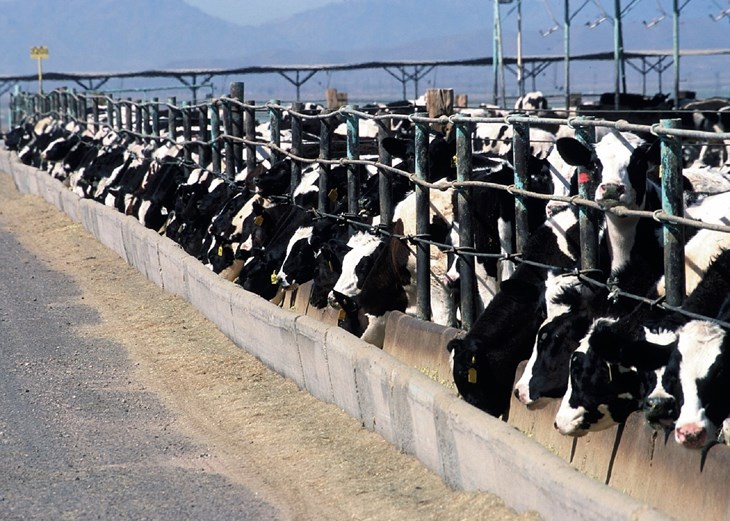Despite meaningful evidence that suggests pasture-raised systems are better for animal welfare and the health of the planet, beef cattle on factory farms are kept in crowded feedlots, where they consume huge quantities of grain and corn (and sometimes candy), both of which contribute to water overuse and require miles and miles of unhealthy, mono-cultured soil.

If you buy beef, look for meaningful, third-party animal welfare certifications (such as Global Animal Partnership Step 4 and above, or Animal Welfare Approved); 100% grass-fed or grass-finished; or pasture-raised. “Grass-fed” animals live their early lives on pasture, but may have been sent to a feedlot for the last few months of their lives (this part of the rearing process is referred to as “finishing”). In contrast, the 100% grass-fed or grass-finished label tells you that the animal lived her entire life on pasture. To verify this, keep an eye out for products certified by the American Grassfed Association, and check out our “Know Your Labels” page for more details.
Unless the packaging says otherwise, cattle are likely to be reared or finished on a confined feedlot, which leads to severe welfare problems.
In addition, look for hormone-free beef. Hormones are commonly used to speed up growth in beef production, and their use by the beef industry is associated with significant animal welfare problems.

Higher-welfare beef isn’t only better for cows, it’s better for you: beef raised on pasture contains more Vitamin E, more beta-carotene, and 25 – 50% less fat than intensively-reared beef.
Download our free Food Guide for more information about buying beef!
